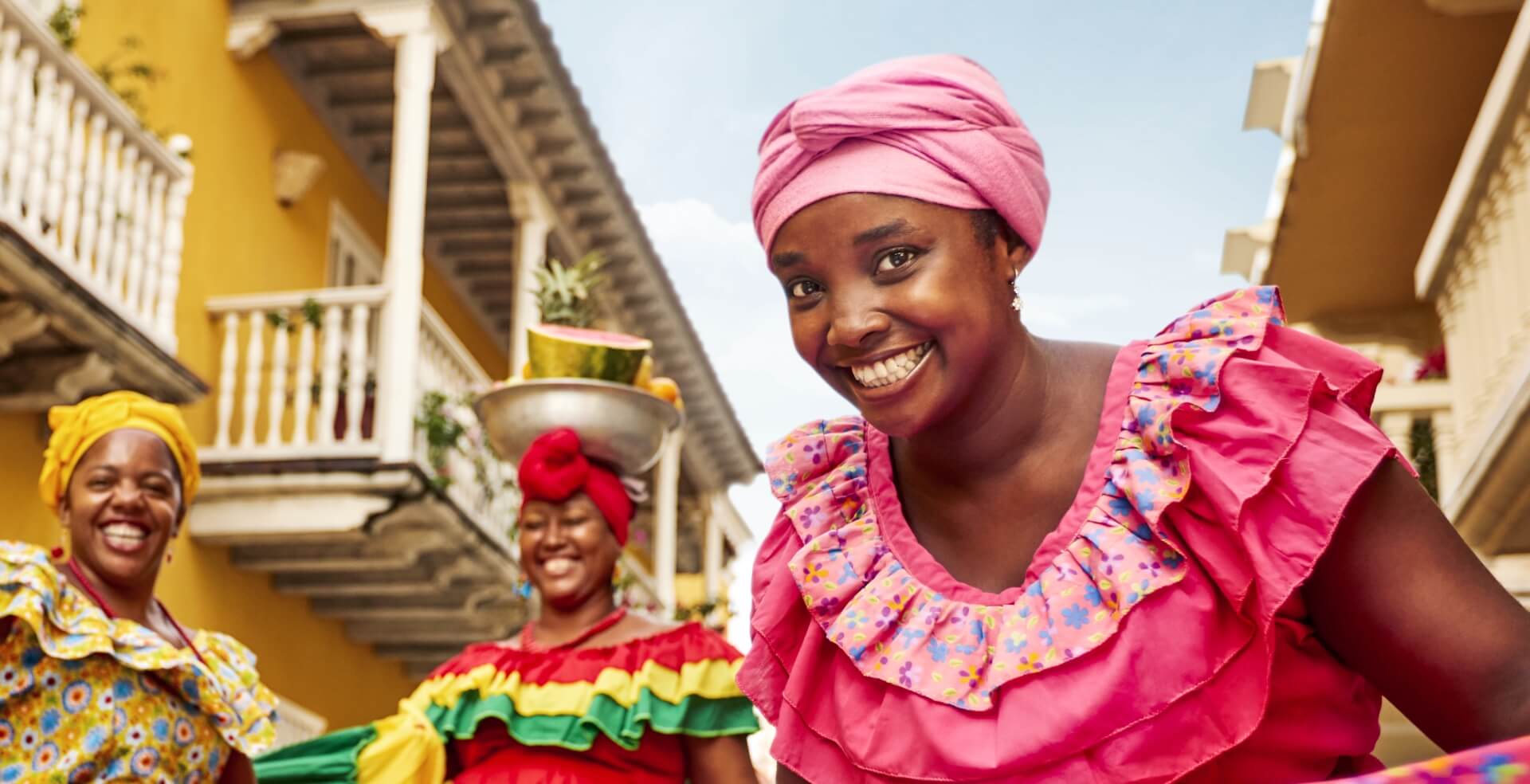COLOMBIA
COLOMBIA

Standing on a hilltop, the statue looks dead ahead, a smile carved across his lips. He wears the coat of a jaguar, the big cat’s head resting on his. On top of the jaguar, lies the skin of a grinning caiman.
This volcanic rock statue is a representation of an ancient indigenous ritual, when the young men dressed in animal hides to absorb their powers.
This elegant and brilliantly sculptured statue is one of hundreds that inhabit San Agustin, Colombia’s national park, called by UNESCO “the largest group of religious monuments and megalithic sculptures in South America”.
You might be interested in: Discover why caving in Colombia is one of the best ecotourism adventures

These magnificent pieces are all that remain of an aesthetically advanced civilization that lived and disappeared in mystery 1,500 years ago, leaving only these statues to speak for it.
Many of the pieces, which range from one meter to seven meters and can weigh more than a ton, dwell on life’s duality; the sun and the moon, death and birth. Archaeologists estimate that the statues were created between 100 BC and 800 AD in San Agustin, Colombia.
Gazing at the elaborate designs can be a hallucinatory experience; the grinning demon, the glaring eagle with the snake in its beak, the man pulling a lizard from his mouth.
Our guide was Fabio Burbano, who had an encyclopedic knowledge of the statues and the region. According to archaeologists, he said, the trippy nature of the relics was the result of heavy use of natural psychotropic drugs.
You might be interested in: 5 perfect places in Colombia to connect with nature

he statues are sculptured with the eye of a master, revealing intricate details on closer inspection. Look closely at the face and one sees that the man’s eye sockets depict two eagle heads staring at each other.
Many of the pieces were created as guardians, posted to stand for eternity at many of the indigenous graves that are scattered around the national park. Everyone estimates that the statues could be just one third of what remains buried.
Brooke McIntyre, visiting Colombia from New Zealand, stood admiring one of the statues in the nearby Isnos Park, which like San Agustin Park was added to UNESCO’s World Heritage list in 1995. The statute towered above, stretching 7 meters in to the sky.
“They’re just so impressive’’ she said, standing in the statue’s shadow. But since she’s been here she’s been pleasantly surprised.
Arrival in San Agustín Colombia
The small town of San Agustin is 400 km southwest of Colombia. One can get here on any of the multiple daily flights to the city of Neiva. From there it’s a 3-hour drive through the two of Colombia’s Andean mountain ranges.
We stayed in the Yacobi hotel, on the outskirts of the town and on the road to the main national park. The hotel is nice and reasonable at 60,000 pesos a night. The finest restaurant we found was ‘Donde Richard’, which specializes in barbecues and serves up a good breakfast.
You might be interested in: Tips to keep in mind to enjoy sustainable tourism in Colombia

Tourists are coming in ever-greater numbers to visit this town and the surrounding national parks, but this zone still remains an undiscovered gem. A trip here off-season, and with luck, you can have the whole park to yourself, free of the annoyances of other people’s snapping cameras. (However, during peak seasons, such as Easter and January, it can be hard to find accommodation within one hour of the park, more a testament to the small number of hotels than anything else).
You might be interested in: Plan your visit to Colombia this World Tourism Day
Adventure tourism in San Agustín
While the traditional draw for tourists has been the parks, San Agustin is keen to broaden its appeal. They are encouraging the development of adventure tourism, such as rock-climbing, nature walks and white-water rafting. We took to the Magdalena River, dressed in the obligatory wetsuit to protect against the cold water. Amir Bouserahare, a French émigré, runs Magdalena Rafting.
“There are few rivers in Colombia that have such good rafting as here along the Magdalena river’’ he said, as we made final preparations to launch the raft. He offers tours for the complete beginner that pass by level 2 rapids all the way up to the toughest level 5.
The river winds through the valley, forests stretching up the mountainsides. Farmers wave down from the riverside, cheering on our raft as we approach one of the major swirls.
At one point, the boat drifts past a towering waterfall that crashes 180 meters in to the river, creating a permanent cloud of spray.
As we left San Agustin, up in the mountains, the stone gods continued their eternal vigilance.
You might be interested in: Visit the treasures behind the charms of Colombia[1]
Linkear con el sitio web de Encanto en inglés
A country proud of the warmth of its people
Diverse, kind, joyous, and with a great heart. That is Colombia, and its people. Built on diversity, this country has developed with immense cultural wealth revealed in its warmth and welcoming spirit towards visitors, greeting all with a smile. The variety of people and customs offers a place for everyone. The best part of Colombia is, no doubt, its people. What are you waiting to come?











